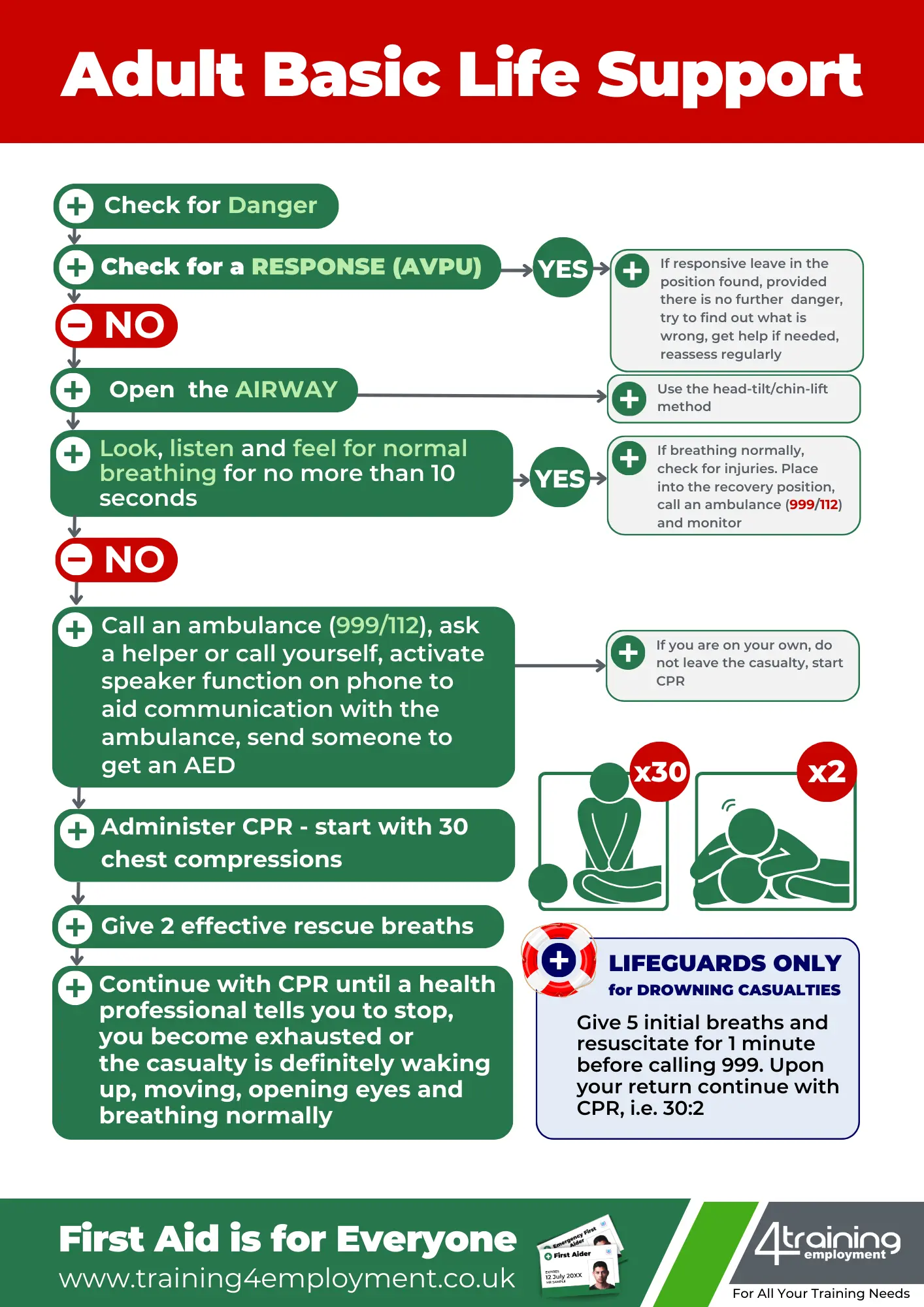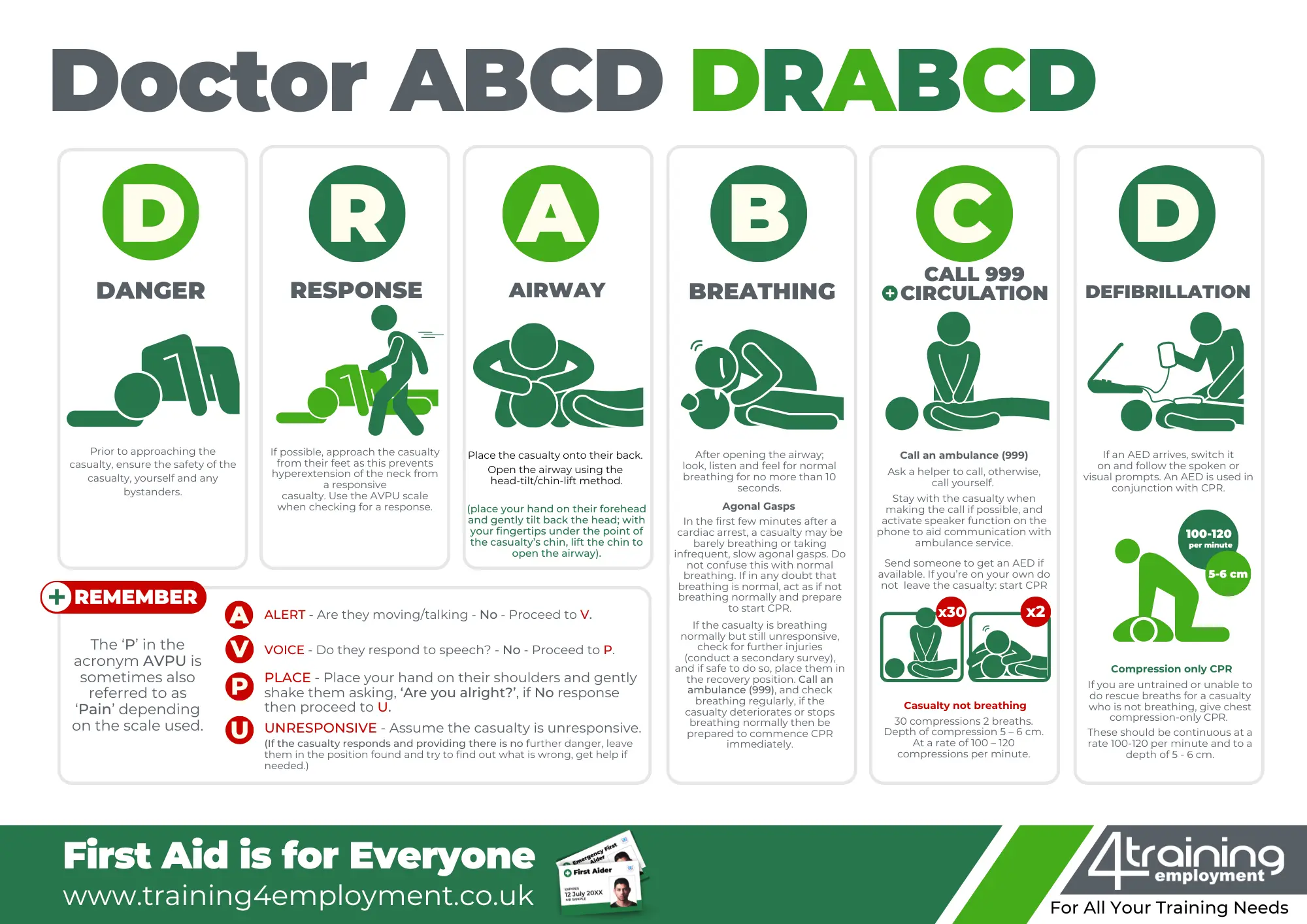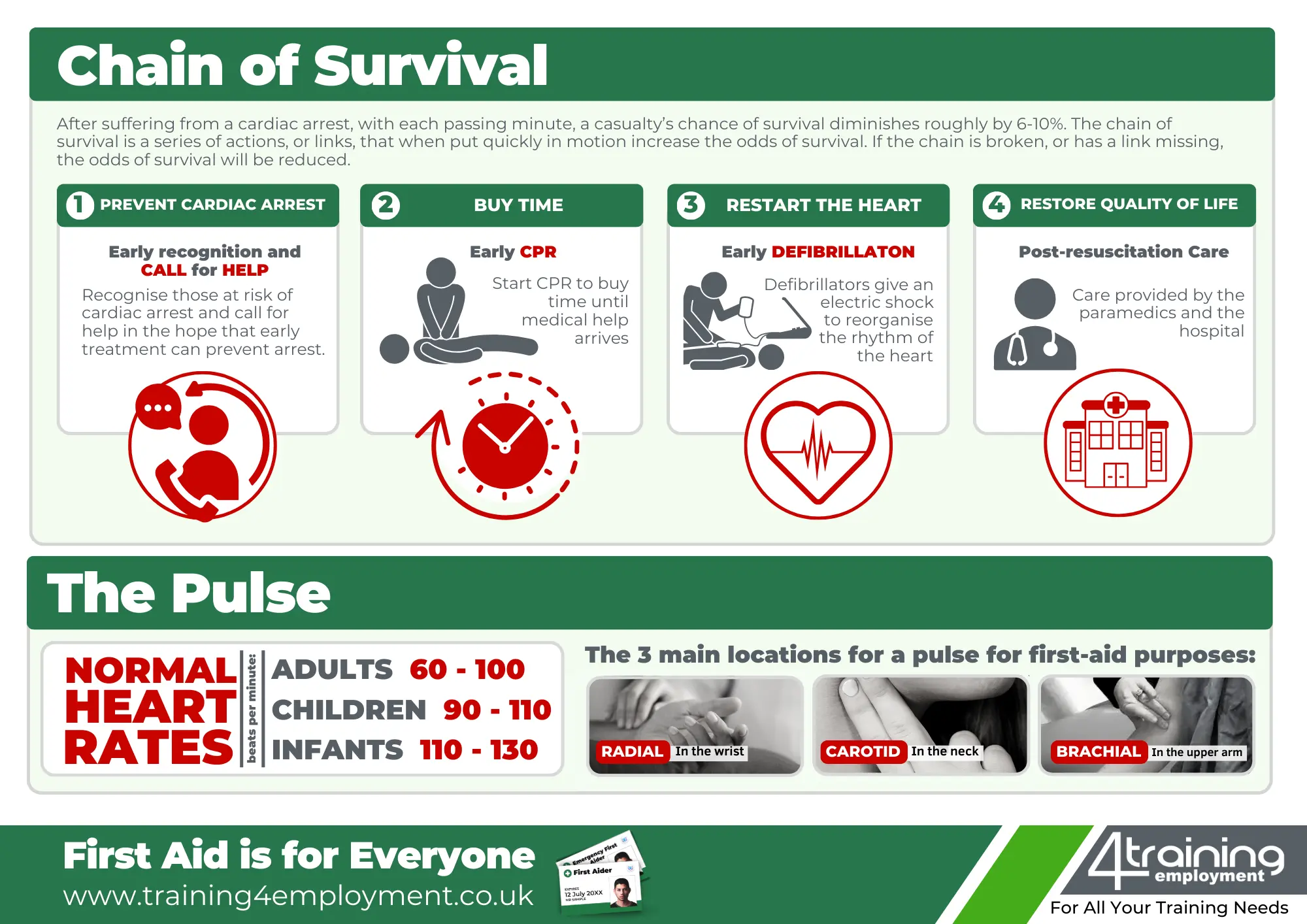
What is First Aid?
First Aid at Work saves lives and prevents minor injuries becoming major ones
People at work can suffer injuries or fall ill at all times. It doesn’t matter whether the injury or illness is caused by work, however, it is important to give them immediate attention and call an ambulance in serious cases.
Below is a list of legislative requirements governing first aid within the workplace. You should make arrangements to ensure sufficient help and support is available.
The Health and Safety (First Aid) Regulations 1981
Requires employers to provide adequate and appropriate equipment, facilities and personnel to ensure their employees receive immediate attention if they are injured or taken ill at work. The Health and Safety (First Aid) Regulations 1981 apply to all workplaces including those with less than five employees and to the self-employed.
The Health and Safety (First-Aid) Regulations (Northern Ireland) 1982
The Health and Safety (First-Aid) Regulations (Northern Ireland) 1982 apply to all workplaces in Northern Ireland including those with less than five employees and to the self-employed. Requires employers in Northern Ireland to provide adequate and appropriate equipment, facilities and personnel to ensure their employees receive immediate attention if they are injured or taken ill at work.
The Health and Safety at Work etc. Act 1974
Employers have a responsibility for the health and safety of their employees. They are also responsible for any visitors to the premises such as customers, suppliers and the general public.
RIDDOR Reporting of Injuries, Diseases and Dangerous Occurrences Regulations (current Regulations)
RIDDOR places duties on employers, the self-employed and people in control of work premises (the Responsible Person) to report serious workplace accidents, occupational diseases and specified dangerous occurrences (near misses) in line with current regulations.
The Management of Health and Safety at Work Regulations 1999
The main requirement on employers is to carry out a concise risk assessment of the workplace. Employers with five or more employees need to record the significant findings of the risk assessment. The risk assessment will assist employers in determining the first-aid provision and requirements within the workplace.
Further information...
Further information can be found on the Health and Safety Executive (HSE) website www.hse.gov.uk
Who needs First Aid?
People at work can suffer injuries or fall ill at all times. It doesn’t matter whether the injury or illness is caused by work, however, it is important to give them immediate attention and call an ambulance in serious cases. The minimum first-aid provision on any work site is:
- a suitably stocked first-aid kit.
- an appointed person to take charge of first-aid arrangements information for employees about first-aid arrangements.
What to consider when assessing your First Aid needs?
What is considered ‘adequate and appropriate’ first aid arrangements will depend on the work you do and where you do it. You should always assess what your first aid needs are.
You must consider:
- the type of work you do
- hazards and the likely risk of them causing harm
- the size of your workforce
- work patterns of your staff
- holiday and other absences of those who will be first aiders and appointed persons
- the history of accidents in your business
You might also consider:
- the needs of travelling, remote and lone workers
- how close your sites are to emergency medical services
- whether your employees work on shared or multi-occupancy sites
- first aid for non-employees including members of the public
Suggested Numbers of First Aid Personnel
Conducting a first aid needs assessment will identify what type of first aid training your first aiders will need, how many first aiders you need and where they should be located. The first-aid provision needed will depend on the circumstances of each workplace.
Higher Hazard Workplaces
E.g. light engineering and assembly work, food processing, warehousing, extensive work with dangerous machinery or sharp instruments, construction and chemical manufacture- Fewer than 5 employees – require 1 small workplace compliant first-aid kit and at least 1 Appointed Person
- 5-50 employees – require 1 medium workplace compliant first-aid kit and at least 1 EFAW trained first-aider.
- More than 50 employees – require 1 large workplace compliant first-aid kit (per 100 people) and at least 1 FAW trained first-aider for every 50 employees.
Low Hazard Workplaces
E.g. offices, shops, libraries- Fewer than 25 employees – require 1 small workplace compliant first-aid kit and at least 1 Appointed Person.
- 25-30 employees – require 1 medium workplace compliant first-aid kit and at least 1 EFAW trained first-aider.
- More than 50 employees – require 1 large workplace compliant first-aid kit (per 100 people) and at least 1 FAW trained first-aider for every 100 employees.
We Can Bring Our Programmes to You
Save your time, reduce travel costs, and reduce downtime!
Please request a quote now to receive information tailored to your business needs for first aid at work courses near me. Group size between 8 and 12 per trainer.
First Aid is for Everyone!
Looking to promote safety in your workplace? Explore our collection of free downloadable posters, guides, and templates. These professionally designed resources are perfect for displaying in offices, break rooms, and common areas. Download, print, and display to make a lasting impact in your work environment!




